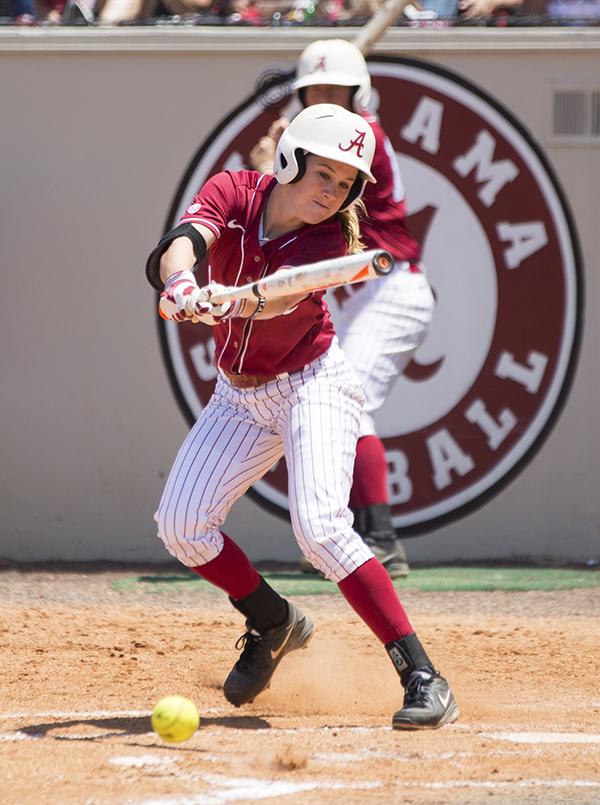Speed is paramount in softball. With only 60 feet between bases, it can be difficult to safely outrun a throw to first on a ground ball.
Often, left-handers employ a tactic called slap hitting where the batter gets a running start when the ball is hit. All she has to do is change direction instead of having to start running and change direction.
“First of all, it’s almost like legal cheating,” Alabama coach Patrick Murphy said, “because the goal of the lefty, especially the slapper, she’s closer to first base than the righty so if you time your steps correctly and you position your steps correctly, you will be closer to first base upon hitting the ball so that’s a key. You have to get a really good start out of the box, and if you do get that and you put the ball on the ground, you have a pretty good shot of being safe.”
The batter cannot have her whole foot touching the ground outside of the batter’s box when she makes contact with the ball. If she does, the ball is dead and she is ruled out.
Timing and footwork is key to executing a slap.
“It’s obviously a lot harder when the pitching’s going faster, but you just have to stay calm and keep your feet going slow,” junior Kallie Case said. “You can’t speed up your feet when the pitcher’s speeding up because then it just messes up your whole timing so once you have the actual steps down, it’s just mostly timing, just working on your timing. It’s not too hard once you get it, but it’s definitely different for every pitcher.”
Case, like many slappers, started when she was younger. She is a right-handed fielder but hits from the left side. She can bunt, slap and hit away.
“I think my favorite’s just the combination because, you know, if you get up and you hit a really hard shot hitting away, then they’re backed up and then you’re like, ‘OK, well, let me just do a little bunt,’” she said. “And I think that’s my favorite part is just mixing it up and making the defense have to be on their toes and not knowing what I’m going to do.”
A well-executed slap can bounce only once and by the time it is fielded and thrown to first, the runner is safely past the base.
“I’ll hear fans say, ‘Just hit the ball,’” Murphy said. “Well, they don’t yell that if the slapper gets on or if the fielder rushes it and throws it down the right field line, and she ends up at third base instead of first base because of the error. In softball, the bases are 60 feet and if you bobble it once, you will be safe, and so the pressure is so tremendous to field it cleanly, make a great throw, catch it and then you’re relying on an umpire to call you out or safe.”
When the runner gets on, she may steal an open base. Unlike in baseball, a runner cannot take a leadoff from the base. A runner cannot step off the base until the ball is released from the pitcher’s hand.
Alabama softball has runners labelled with a green light. This means Murphy has given them the go-ahead to steal second at any time. Murphy said he has six or seven of these runners.
When a green-light runner is on first and a slapper is up to bat, it forces the defense to give something up. A coach has to decide whether the team defends the steal or leaves the shortstop over to defend a hit, Murphy said.
“Something has to give,” he said. “And then we have to be smart offensively, see what they’re going to do and then try to do the opposite of what they want us to do. So there’s many game within the game, and there’s a lot more strategy, I think, involved in softball than there is in baseball even.”









